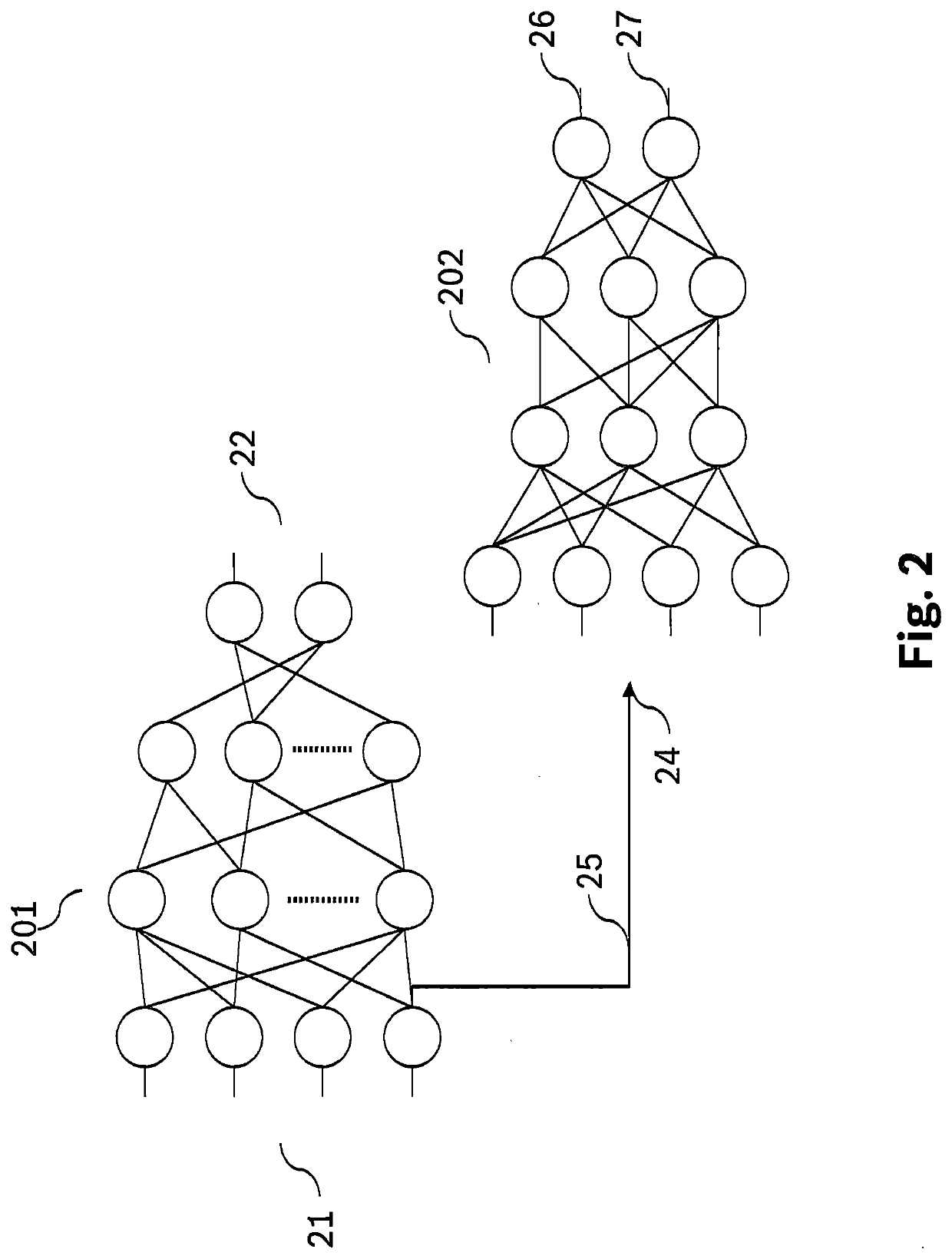Method, device, and computer program for creating training data in a vehicle
a technology for creating training data and vehicles, applied in computing models, instruments, biological models, etc., can solve the problems of high transfer cost, high memory cost, and difficulty in many applications to describe the required data or specify the required data
- Summary
- Abstract
- Description
- Claims
- Application Information
AI Technical Summary
Benefits of technology
Problems solved by technology
Method used
Image
Examples
Embodiment Construction
[0041]FIG. 1 shows a schematic representation of a vehicle 10. In a further exemplary embodiment, vehicle 10 may be a service, assembly, or stationary production robot, alternatively an autonomous flying object such as a drone. At least vehicle 10 may include a detection unit 11. Detection unit 11 may be, for example, a camera which detects surroundings of vehicle 10. Other types of sensors such as radar or LIDAR are also possible. Detection unit 11 may be connected to a first trained neural network 201. First trained neural network 201 ascertains an output variable as a function of a provided input variable, for example, provided by detection unit 11, and as a function of a plurality of parameters of first trained neural network 201. The output variable may be conveyed to an actuator control unit 13. Actuator control unit 13 controls an actuator as a function of the output variable of first trained neural network 201. The actuator may be a motor of vehicle 10 in this exemplary embo...
PUM
 Login to View More
Login to View More Abstract
Description
Claims
Application Information
 Login to View More
Login to View More - R&D
- Intellectual Property
- Life Sciences
- Materials
- Tech Scout
- Unparalleled Data Quality
- Higher Quality Content
- 60% Fewer Hallucinations
Browse by: Latest US Patents, China's latest patents, Technical Efficacy Thesaurus, Application Domain, Technology Topic, Popular Technical Reports.
© 2025 PatSnap. All rights reserved.Legal|Privacy policy|Modern Slavery Act Transparency Statement|Sitemap|About US| Contact US: help@patsnap.com



